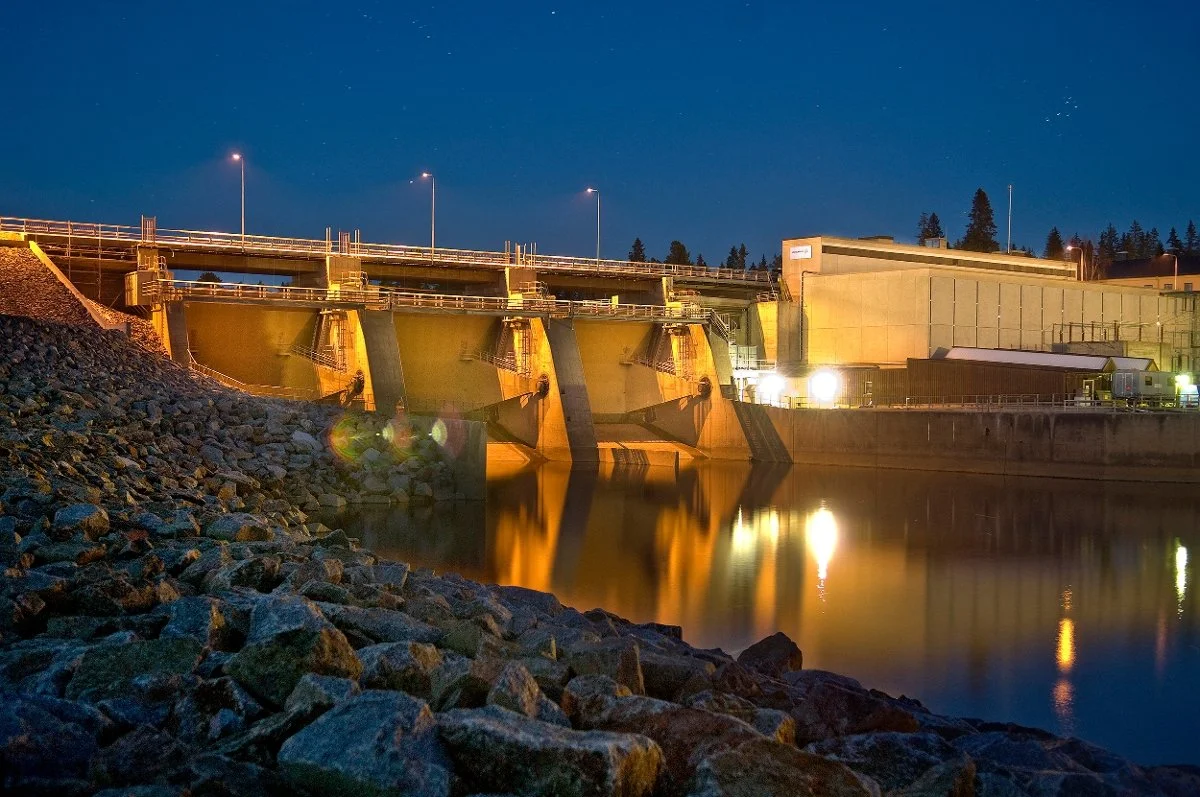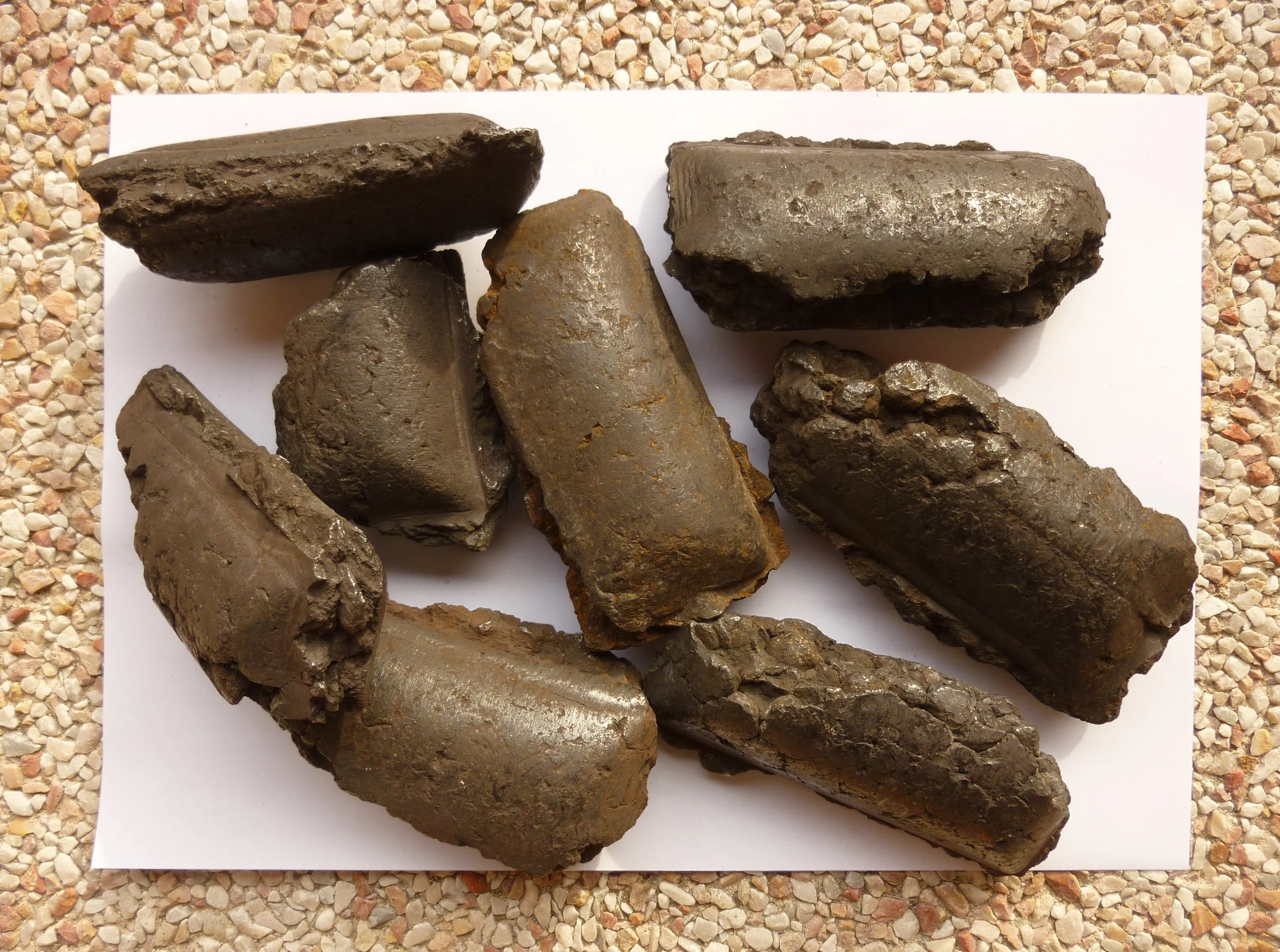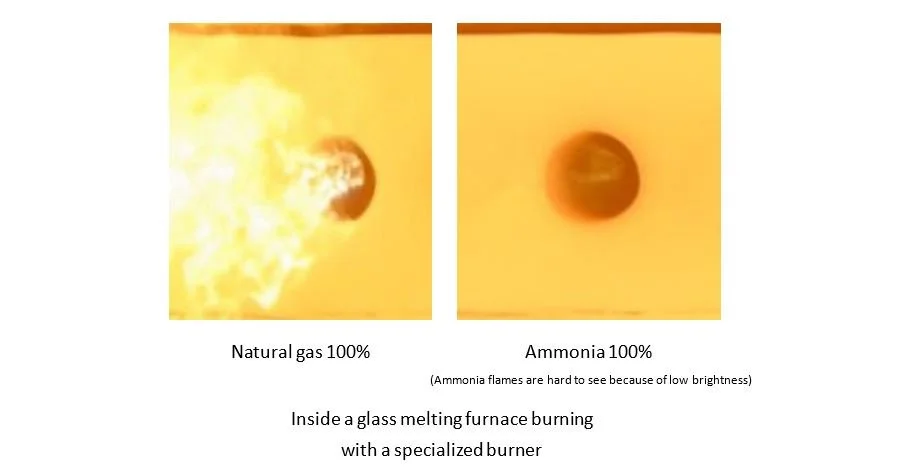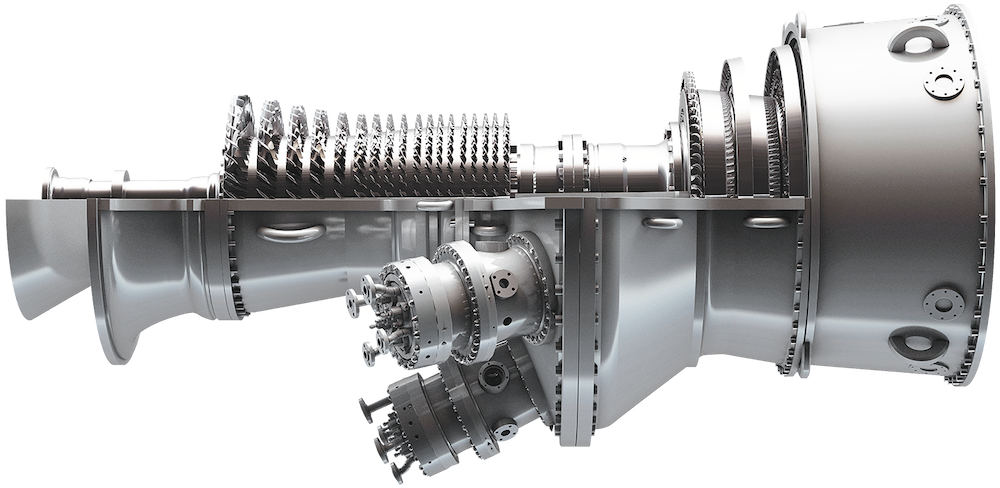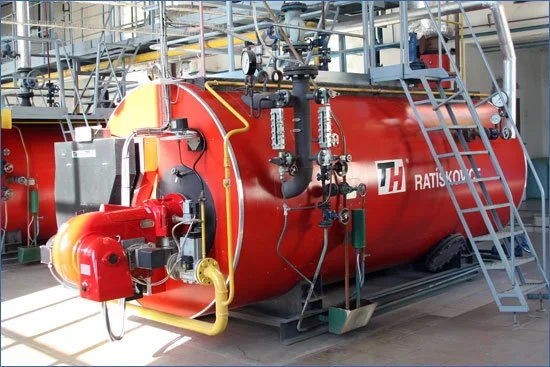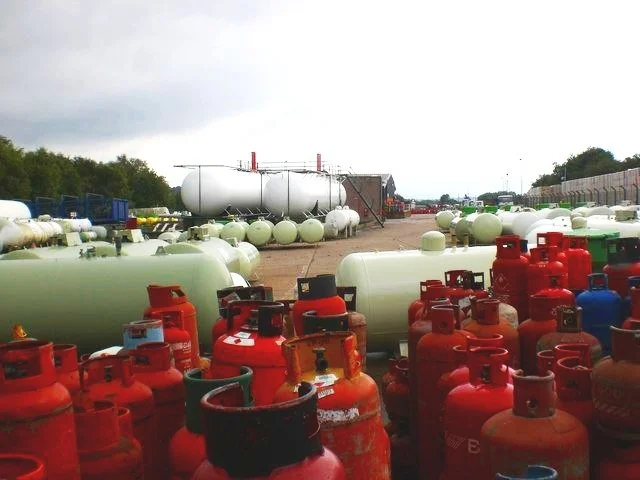Green Ammonia as an Industrial Fuel
Green ammonia can serve as a drop in fuel for most of the purposes currently served by natural gas, or even coal. These include the production of process heat, boiling of water, firing of glass and ceramics, kilning of lime and cement, smelting of steel and other metals, and generation of electricity in gas turbines. Some adaptation of equipment will generally be required, owing to ammonia’s low flame speed, and in some cases entire new industrial plant will be built from scratch, as in the case of steel.
Green Ammonia as an Industrial Fuel
A remarkable 73% of UK industrial energy demand is for heat, and about half of that is for steam to drive industrial processes. Little if any of that demand for heat, currently supplied mainly by natural gas, is incapable of being replaced by a combination of electricity supplied directly from renewable sources, Green hydrogen and Green ammonia. There are also many opportunities for improving energy efficiency, which could shave as much as 15% from thermal demand.
Steelmaking - Green Hydrogen, Green Ammonia
With growing demand for pollution-free low and zero carbon steel, major steel makers are looking to replace the coal and methane used in classical steel manufacture with renewable reagents such as hydrogen and ammonia.
Hydrogen is definitely leading the race, with Europe’s first such steel plant due to begin production in 2025 at Boden in northern Sweden, where it will use locally produced hydrogen powered by nearby hydropower from Vattenfall’s Boden hydro plant, and wind turbines. Production is anticipated to reach five million tonnes by 2030.
H2 Green Steel will use a ‘direct reduction’ reactor in the place of a conventional coal-fired blast furnace, using hydrogen to chemically strip the oxygen from the iron ore to produce Hot Briquetted Iron (also known as Sponge Iron) and water.
Not only is the process carbon-free, but it also reduces the volume of waste slag arising from steel production, which arises from the combination of mineral impurities in the ore, and coal ash.
The company has also completed an agreement with Spain’s Iberdrola to build a 1GW solar-hydrogen powered plant at an undisclosed location on the Iberian peninsula, which will produce two million tones of iron per year.
"Green hydrogen will be a key technology in the decarbonisation of heavy industrial processes, such as steel production”, says Aitor Moso of Ibderola. “Innovative projects such as this will help accelerate the commercialisation of larger and more sophisticated electrolysers, making green hydrogen more competitive.”
Iberdrola will own and operate the solar generation plant while H2 Green Steel will own and operate the steel foundry, a cooperation model that appears certain to be reproduced elsewhere. According to H2 Green Steel’s Kajsa Ryttberg-Wallgren, the Boden project “has shown that there is a strong demand for green steel from a broad customer base.”
Other are getting in on the act:
Hybrit, a joint venture of iron ore miner LKAB, Nordic steel company SSAB and Vattenfall, aims to open another Green hydrogen steel plant at Gällivare in northern Sweden by 2026.
German steel giant Thyssenkrupp intends to introduce carbon-neutral production at all its plants by 2045.
Nippon Steel has plans for a Green steel plant in Japan.
GravitHy has plans to open a Green steel plant at Fos-sur-Mer in southern France.
And Germany’s Thyssenkrupp is building a Green steel facility in Duisberg, at the confluence of the rivers Rhine and Ruhr.
But if hydrogen can do the job, so too can ammonia, according to researchers at the Max-Planck-Institut für Eisenforschung. Importantly, they have found that there’s not need to crack the ammonia into hydrogen and nitrogen first, which would add to cost. Rather, the ammonia can be used in its natural state, and even brings certain advantages to the steelmaking process.
“Our aim was to study whether ammonia can be directly used to reduce iron ores without cracking it into hydrogen and nitrogen”, said Yan Ma, group leader at the Institute.
“Avoiding this cracking process can reduce the overall costs by 18 percent. Moreover, we analysed how ammonia as reduction agent affects the properties of the reduced iron.”
“The ammonia-based direct reduction proceeds through an autocatalytic reaction. We compared its kinetics with the hydrogen-based direct reduction. Both have similar characteristics and yield the same degree of metallisation.
“In contrast to hydrogen-based reduction, nitrides form during cooling in ammonia, which could protect the sponge iron from corrosion and make it easier to handle. The nitride phase can be completely dissolved and removed during the subsequent melting process.”
Photo: The Boden hydroelectric plant on the Luleälv river in northern Sweden, which will soon be producing hydrogen for Europe’s first zero-carbon steel plant. Credit: Vattenfall.
Image: Artist’s impression of H2 Green Steel’s Boden plant to be built in northern Sweden, which recently secured debt financing agreements for the plant’s construction worth €.4.2 billion. Credit: H2 Green Steel.
Photo: Hot Briquetted Iron (HBI, also known as sponge iron) of the kind H2 Green Steel will make from Vale’s Iron Ore Briquettes direct-reduced by Green hydrogen at the company’s Boden plant. When ammonia is used in place of hydrogen, iron nitrides form on the briquettes’ surface and this may improve their handling qualities and reduce susceptibility to oxidation. Credit: Borvan53 / Wikimedia Commons CCBY.
Photo: a new Direct Reduction steel plant, powered by Green hydrogen, will soon rise up close to this derelict steel plant in Duisburg. Credit: Edwin van Buuringen via Wikimedia CC-BY-SA 2.0.
Industrial Burners and Furnaces
The Japanese hi-tech materials manufacturer Asahi Glass Corporation (AGC) has developed an industrial production furnace fired by Green ammonia, in a project funded by the New Energy and Industrial Technology Development Organization (NEDO), together with partners Taiyo Nippon Sanso Corporation (TNSC), the National Institute of Advanced Industrial Science and Technology, and National University Corporation Tohoku University.
The furnace uses an ammonia-oxygen burner, developed by TNSC, that allows for close control of both flame and furnace temperature, while delivering low NOx emissions within the limits applying to LNG or heavy fuel oils. The furnace is initially being trialled in the manufacture of industrial glass.
According to AGC, “the aim is to fully introduce ammonia combustion technology into glass melting furnaces after assessing the scope of its application.” The company hopes to expand application of the technology to other materials, such as steel and aluminium, “to widely help reduce GHG emissions in the production processes of the materials industry.”
In a parallel move in late 2023, Mitsubishi Heavy Industries (MHI) completed testing of its own industrial burner fired by both pure ammonia and a coal-ammonia blend at its Nagasaki District Research & Innovation Center. Using a small test furnace consuming 500 kg/hour, MHI says the tests “confirmed stable combustion, reduced nitrogen oxide (NOx) emissions compared to coal firing, and complete combustion of the ammonia.”
The next step, according to MHI, will be to carry out combustion tests in a larger 4 tonne / hour furnace. Next, MHI plans to “take steps for application of the burner it has developed for thermal power plants in Japan and overseas.” By fiscal 2024, MHI plans to “develop burners capable of ammonia single-fuel firing for both circular firing and opposed firing type burners.”
Photo: Asahi Glass Corporation (AGC).
Photo: Co-firing of ammonia and coal in MHI’s test furnace. Photo: Mitsubishi Heavy Industries.
Photo: A GE F-class heavy-duty gas turbine of the kind that’s widely installed in gas fired power plants around the world, now selected for conversion to ammonia-fuelled operation. Credit: GE Vernova.
Graphic: GEV’s 2-stage ammonia combustion process featuring a lean stage followed by a rich stage in which oxides of nitrogen are reduced to pure nitrogen and water. Credit: GE Vernova.
Photo: A 40MW H25 Series gas turbine of the kind Mitsubishi Power is adapting to burn pure ammonia. Credit: Mitsubishi Power.
Photo: Whitegate CCGT power station in County Cork, Ireland, set for the installation of Europe’s first ammonia-fuelled gas turbine. Credit: Bord Gáis Energy.
Gas Turbines for Power Generation
A big part of the promise of Green ammonia is that it can serve as a zero-carbon backup fuel for power generation at times of ‘Dunkelflaute’ (dark doldrums) when renewables like wind and solar are producing little if any power.
But exactly how will the power will be generated? Fuel cells are one option, however it will be difficult to justify the required scale of investment in fuel cells if they’re only to be used for couple of dozen days a year. Moreover the Solid Oxide fuel cells best suited to burning ammonia run best, and last longest, if run consistently at a constant high temperature of about 700C. They’re therefore unsuited to cycling their output up and down in response to demand.
So the best solution may be to use our existing gas turbine generation plant - which can actually achieve impressive thermal efficiencies in the region of 50-60% - and avoid massive capital outlays on new backup generation capacity.
GE Vernova and IHI Corporation
And the good news is that two of the world’s biggest gas turbine manufacturers, Japan’s engineering giant IHI Corporation and GE Vernova signed an agreement in 2023 to develop technology that will allow existing turbines that normally run on natural gas (specifically GEV’s legacy fleet of 200-250 MW F class heavy-duty gas turbines) to burn ammonia instead.
Over the past several years, IHI has been experimenting with ammonia in a small 2-megawatt turbine at its Yokohama research-and-development facility, and in 2022 achieved the world’s first power generation using 100% liquid ammonia, with minimal emissions of nitrous oxide (N2O).
According to Jeffrey Goldmeer, director of hydrogen value chain at GE Vernova, the key invention was a two-stage combustion system featuring “both a rich and a lean stage”, in order to minimise “potentially very high” nitrogen oxide emissions.
The GEV graphic (left) indicates that most of the combustion is carried out in the ‘lean’ oxygen-rich primary stage, producing oxides of nitrogen. In the secondary oxygen-poor ‘rich’ stage additional ammonia is introduced, stripping the oxygen from the nitrogen oxides to leave pure water and nitrogen.
Mitsubishi Power
Meanwhile Japan’s Mitsubishi Power (MP, part of the Mitshubishi conglomerate) is adopting a different approach, to develop a new version of its 40MW H25 Series gas turbine designed specifically to burn ammonia fuel. The work has been under way since 2017 as part of the Japan’s Strategic Innovative Promotion Program and New Energy and Industrial Technology Development Organization (NEDO).
MP’s initial approach was to catalytically crack the ammonia fuel into nitrogen and hydrogen and nitrogen, to be burnt in a gas turbine. Waste heat from the turbine being used the energise the cracking. However the company is now exploring direct ammonia combustion using “a newly developed combustor that reduces NOx emissions”, together with selective catalytic reduction to further lower NOx in the flue gases. MP hopes the burners will also find other industrial uses.
In late 2023 Centrica plc and Mitsubishi Power Europe executed a agreement to build and operate Europe's first ammonia-fired power generator at the Whitegate Combined Cycle Gas Turbine (CCGT) power station in County Cork, Ireland, operated by Centrica subsidiary Bord Gáis Energy. No technical information has been released.
The companies said the power station “would serve as a global demonstration site for ammonia-fired power generation technology, providing insight into the feasibility and scalability of low carbon ammonia as a green fuel and shaping the future of power generation worldwide.”
Ammonia-fired boilers
In 2023 a £3.4 million project to create a 1MW ammonia-fuelled boiler was launched by Wales’s Cardiff University and energy supplier Flogas, which delivers fuel to industrial to commercial / industrial energy users lacking access to the natural gas grid.
The immediate aim is to decarbonise the 4.5 Mt of oil currently consumed in the off-mains industrial market annually in the UK, producing some 14.2 Mt of CO2. But it will also provide a way to much larger scale industrial decarbonisation as a zero-carbon substitute for natural gas.
“The purpose of our project is to develop ammonia combustion technology that can use green ammonia as a fuel to contribute to net zero targets”, said Project Leader Dr Syed Mashruk.
“Over the course of this project, we will bring to life our conceptual design for a 1 MW ammonia-fed steam boiler, creating a prototype and rigorously testing and improving it. At the end of the project, we aim to have a boiler that is fit for commercialisation, and fuelled only by clean ammonia, which Flogas Britain will then supply to customers as an off-grid industrial heating option.”
James Rudman, Business Development Director at Flogas said: “The off-mains industry in the UK is notoriously hard to decarbonise, and a lot of it is still powered by carbon-heavy oil, so finding cleaner, greener alternatives is a significant, pressing challenge.
“Ammonia is a key part of this; we believe it’s a compelling, highly effective renewable option for off-grid industry, and an extremely cost effective one too. Plus, businesses running on LPG now, will be able to switch to ammonia in the future with modification to equipment.”
The two-year ‘Amburn’ research project is funded by the Department of Energy Security and Net Zero as part of its £55 million Industrial Fuel Switching Competition, itself part of the UK’s £1bn Net Zero Innovation Portfolio. A new Centre of Excellence on Ammonia Technologies has also been created in Cardiff’s Net Zero Innovation Institute.
UK industry currently uses fossil fuels to provide some 9,000 Mt oil equivalent of energy for heating purposes (excluding energy bought ae electricity) equivalent to 105 TWh. With the development of ammonia-fuelled boilers and industrial burners (as described above), a substantial part of this energy demand could be supplied by Green ammonia in a future decarbonised Britain.
Photo: a typical industrial ‘package boiler’ of the kind that could in the future be fuelled by Green ammonia. Credit: Stasqd / Wikimedia Commons CCBY-SA 3.0.
Photo: Flogas’s Merry Lees gas bottling plant. The company hopes to add Green ammonia to its product range. Credit: Evan / geograph.org.uk CC BY-SA 2.0.
Photo: Expect more of these to pop up as industrial demand for ammonia fuel increases. A 36,200 cubic metre cryogenic tank for cold liquid ammonia storage under construction. Credit: Geldof.
Image: Direct fired countercurrent rotary kilns account for 95% of global Portland cement production. Credit: LinguisticDemographer via Wikimedia, Public Domain.
Photo: the Ribblesdale cement works in North Yorkshire, where hydrogen and ammonia have been trialled as ‘fuel enhancers’ to support the combustion of lower grade biomass. Credit: Heidelberg Materials.
Photo: Cement is a high volume, low margin business, in which competitiveness comes from keeping input costs to a minimum. Credit: KVDP via Wikimedia, Public Domain.
Ammonia for Kilning Portland Cement
Portland cement manufacture is a leading global emitter of CO2, reflecting two kinds of emissions resulting from the kilning process: from burning carbon based fuels; and from the calcination of lime CaCO3 + heat => CaO + CO2). Typical fuels include coal, heavy fuel oil, and waste derived fuels such as worn-out tires and food processing residues.
Using Green ammonia as a fuel (on its own or with other carbon-neutral fuels) would eliminate the first kind of emissions; but the second could only be prevented by capture from flue gases.
In 2021 Heidelberg Materials, a major UK cement manufacturer, announced the successful outcome of a trial in which its Ribblesdale plant switched to a 100% non fossil fuel mix comprising hydrogen (39%), glycerine (49%), and meat and bone meal (MBM, 12%). In 2024 the company began a second trial using ammonia, first cracking the ammonia into hydrogen and nitrogen.
“We have already proved the success of using hydrogen as part of a lower carbon fuel mix, but its storage and transportation are technically challenging and, at present, costs are prohibitive,” said Sustainability Director Marian Garfield. “Ammonia potentially offers a more energy-dense, cost-effective source of hydrogen that could be used as a fuel enhancer to allow the use of more lower grade waste derived fuels to power the kiln and cut CO2 emissions.”
A similar experiment was carried out in 2018 in Osaka, Japan by UBE Industries, using a combination of heavy fuel oil (70%) and ammonia (30%). The findings were that the partial switch to ammonia fuel made no difference to the reaction rate in the kiln; and that the mineral content of the resulting clinker, and the compressive strength of the cement, were likewise unaltered.
The economics of the cement industry are based on high volumes and low margins, hence the profitability (or not) of cement making depends in large part on low input costs - in particular cheap fuels. It appears that the initial role for Green ammonia / hydrogen in a zero-carbon economy is to serve as a carbon-free ‘fuel enhancer’ in combination with low thermal value biomass.

